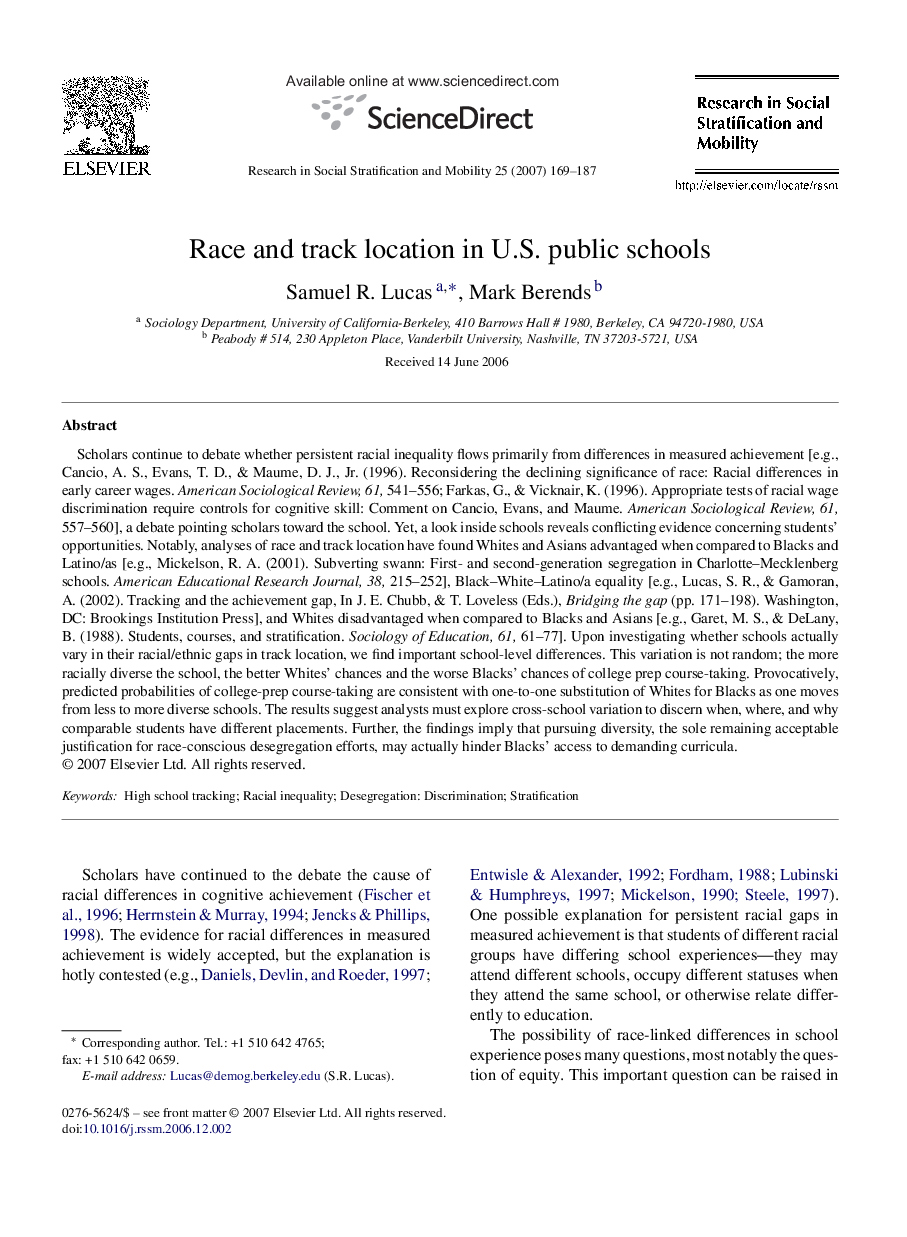| Article ID | Journal | Published Year | Pages | File Type |
|---|---|---|---|---|
| 998649 | Research in Social Stratification and Mobility | 2007 | 19 Pages |
Scholars continue to debate whether persistent racial inequality flows primarily from differences in measured achievement [e.g., Cancio, A. S., Evans, T. D., & Maume, D. J., Jr. (1996). Reconsidering the declining significance of race: Racial differences in early career wages. American Sociological Review, 61, 541–556; Farkas, G., & Vicknair, K. (1996). Appropriate tests of racial wage discrimination require controls for cognitive skill: Comment on Cancio, Evans, and Maume. American Sociological Review, 61, 557–560], a debate pointing scholars toward the school. Yet, a look inside schools reveals conflicting evidence concerning students’ opportunities. Notably, analyses of race and track location have found Whites and Asians advantaged when compared to Blacks and Latino/as [e.g., Mickelson, R. A. (2001). Subverting swann: First- and second-generation segregation in Charlotte–Mecklenberg schools. American Educational Research Journal, 38, 215–252], Black–White–Latino/a equality [e.g., Lucas, S. R., & Gamoran, A. (2002). Tracking and the achievement gap, In J. E. Chubb, & T. Loveless (Eds.), Bridging the gap (pp. 171–198). Washington, DC: Brookings Institution Press], and Whites disadvantaged when compared to Blacks and Asians [e.g., Garet, M. S., & DeLany, B. (1988). Students, courses, and stratification. Sociology of Education, 61, 61–77]. Upon investigating whether schools actually vary in their racial/ethnic gaps in track location, we find important school-level differences. This variation is not random; the more racially diverse the school, the better Whites’ chances and the worse Blacks’ chances of college prep course-taking. Provocatively, predicted probabilities of college-prep course-taking are consistent with one-to-one substitution of Whites for Blacks as one moves from less to more diverse schools. The results suggest analysts must explore cross-school variation to discern when, where, and why comparable students have different placements. Further, the findings imply that pursuing diversity, the sole remaining acceptable justification for race-conscious desegregation efforts, may actually hinder Blacks’ access to demanding curricula.
